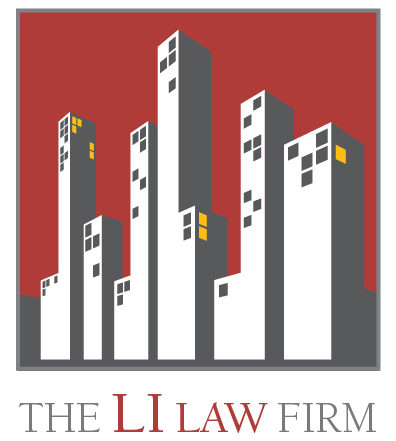
“Sometimes It’s Rough All Over” (Jan-Feb 2016)
This article explains why many law-abiding physicians should know good criminal defense counsel. – Sometimes Its Rough.pdf
“Hic sunt dracones: Here, there be dragons” (July-August 2015)
Our modern world contains “dragons” that are unimaginable to the technologically challenged. It also includes familiar risks like theft and loss. Spools of fax paper, rolls of stamps, and long lines at the bank are nearly obsolete, but our professional world includes pirates, Trojan horses, and trolls. The modern physician may now have a virtual office, communicate with patients via the Internet, and keep electronic medical records (EMRs). Criminals have similarly adapted. – KCMS_JulyAug15_HicSuntDracones
Medical Spas (May-June 2015)
In this article, we address laser hair removal in order to highlight issues relevant to physicians considering a relationship with a medical spa. We identify the risks of laser hair removal and the regulations pertaining to such treatment, particularly regarding physician delegation of treatment to non-physician, licensed professionals. – KCMS_MayJun15_MecialSpas
Diagnosing Domestic Violence (Nov-Dec 2014)
Recent scandals have brought domestic violence once again to national headlines, although domestic violence seems a perennial problem in our society. Historically and generally, the issue is framed as male physical violence against a female partner or family member. Of course, we know the reality: Domestic violence includes not only physical violence, but also mental and emotional abuse, and there are male victims of domestic violence as well as female abusers. Intimate and family violence crosses gender, sex, and familial categories. This article addresses how conscientious communication can facilitate physician detection and response to patients living with domestic violence. – KCMS – Diagnosing Domestic Violence
Stepping Back from the Brink (May-June 2014)
Perhaps, at some time in our lives, we all get to that point—when despair at the tide of grief or loss or trauma brings one to consider suicide. Perhaps. Such rawness is difficult to capture on questionnaires and may remain unspoken even between best friends and spouses. The stigma of suicide—that it evinces weakness of character, cowardice, selfishness—make it an unlikely topic of frank, personal conversation. Whether or not each of us at some point in our lives contemplates the ultimate exit may be beyond determination. This article explores how individuals who reach that point may be dissuaded from taking their own lives. – KCMS – Stepping Back from the Brink
(Peer Reviewed Article) J Bioeth Inq. 2004;1(1):20-6.
Out of the armchair: a bioethics student’s search for practical knowledge in Kenya.
This paper recounts the efforts of a Bioethics student to understand the experience of human subjects of medical research in Kenya. Although the endeavor resulted in more questions that answers, it served to highlight areas where the current system of protections has failed to secure the well-being of those involved. It concludes that, in addition to existing considerations, ethical review ought to include another kind of information: that which can be gained only from listening to the feelings and experiences related by subjects themselves. – http://www.ncbi.nlm.nih.gov/pubmed/16025594
Can Giving Up The Keys Be Empowering? (Jul-Aug 2013)
For many senior citizens, the loss of their driving privileges leads to depression, a decreased social life, inactivity, and difficulty accessing necessities such as health care services and groceries. Taking away the car keys might prevent an accident and injury,but it does not ensure vitality. Is there a way to address concern about an elderly driver that respects both the individual and the safety of the public? Families, physicians and attorneys can take a collaborative approach to tackling the question of whether a senior should continue driving. – KCMS – Keys
Mind the Gap: Negotiating Your Way to Better Pay (Sept-Oct 2011)
In February 2011, Health Affairs published an article entitled, “The $16,819 Pay Gap For Newly Trained Physicians: The Unexplained Trend of Men Earning More Than Women”. Previous surveys of physician compensation have revealed differences in pay along gender lines, usually attributing them to women working fewer hours or practicing in lower-paid areas of medicine. This study stands out because it adjusted for observable variables such as practice type, medical specialty, work hours, and practice location. It also controlled for experience, rank, and daily productivity by examining the starting salaries of graduating resident physicians in New York State from 1999 through 2008. While the amount of the pay differential is striking, even more remarkable is the revelation that the gap increased nearly five-fold over the course of the study: back in 1999, male physicians earned only $3,600 more than their female counterparts. This article suggests practical ways that women physicians might avoid the gap by careful negotiations of contracts. – KCMS – Mind the Gap
When Is It Time to Retire? (Jul-Aug 2011)
Physicians are often compared to airline pilots: both professions require intensive training and bear significant responsibilities for public safety. Unlike physicians, however, commercial pilots must undergo regular health and performance assessments and are not permitted to stay in the profession after the age of 65. Physicians, on the other hand, can practice as long as they meet the minimum requirements to renew their medical license. Other than meeting these minimum requirements, a physician’s fitness to practice relies largely on self-assessment. – KCMS – When Is it Time to Retire
Confidentiality and Kids (May-Jun 2011)
Physicians treating minors have added responsibility to protect their patients’ confidentiality. For physicians who treat the children of friends or colleagues, there are special precautions that should be taken. – KCMS – Confidentiality and Kids
How Social Media Can Affect Your Practice (Mar-Apr 2011)
Not so long ago, the medical community was alerted to the professional risks attending their use of a common modern technology: namely, elevators. Conversations in hospital elevators can jeopardize not only patient privacy, but also public trust in the profession. Discussing patient care with colleagues while traversing the vastness of today’s hospitals has clear time-saving advantages; but the risks clearly outweigh the benefits. Recent technology poses more complex issues. – KCMS – Social Media
Making Meaningful Use of ‘Meaningful Use’ (Jan-Feb 2011)
The Center for Medicare & Medicaid Services (CMS) is implementing financial incentives—up to $27 billion over the next ten years—to encourage doctors to integrate technology such as Electronic Medical Records (EMRs) into their practices. – KCMS – Meaningful Use
Patient-Centered Communication (Sept-Oct 2010)
The unexpected burst of emotion, the patient who always seems unsatisfied, the condition that doesn’t improve despite appropriate treatment, the failure to comply with apparently simple instructions, vague or chronic symptoms, the “actually one more thing” that the patient requests when our hand is on the doorknob – what physician wouldn’t want a cure for these difficult situations? – KCMS – Patient-Centered Communication
How to Become an Effective Negotiator (Jan/Feb 2010)
Medical school probably did not explain the way health insurance companies influence patient care. Nor did medical school explain how medical insurance companies do business. Responsible physicians should understand these business practices, in the interest of their patients and also in their own professional interest. – KCMS – How to Become an Effective Negotiator
Patient Oriented Outcome Analysis (JanFeb 2010)
There is a widespread effort today in funding and delivering medical services to the U.S. population. This effort is largely a result of the increasing proportion of the national budget being spent on medical-related matters. Much public emphasis is placed on cost- effective care, and sources of funding. The unique dependence on employer funded private insurance rests in the American model, which is not present in other industrialized nations. This emphasis on costs dominates this debate, and the objective analysis of patient outcomes is secondary. This essay aims to balance this debate by stressing patient outcomes. – KCMS – Patient Oriented Outcome Analysis
“Wesleyan University’s Real Policy on Sexual Assault” Wesleyan University Argus, April 24, 1992.
Decades before campus sexual assault became a topic of national focus, Nicole Li was an outspoken advocate for survivors. – Wesleyan University Argus Article
